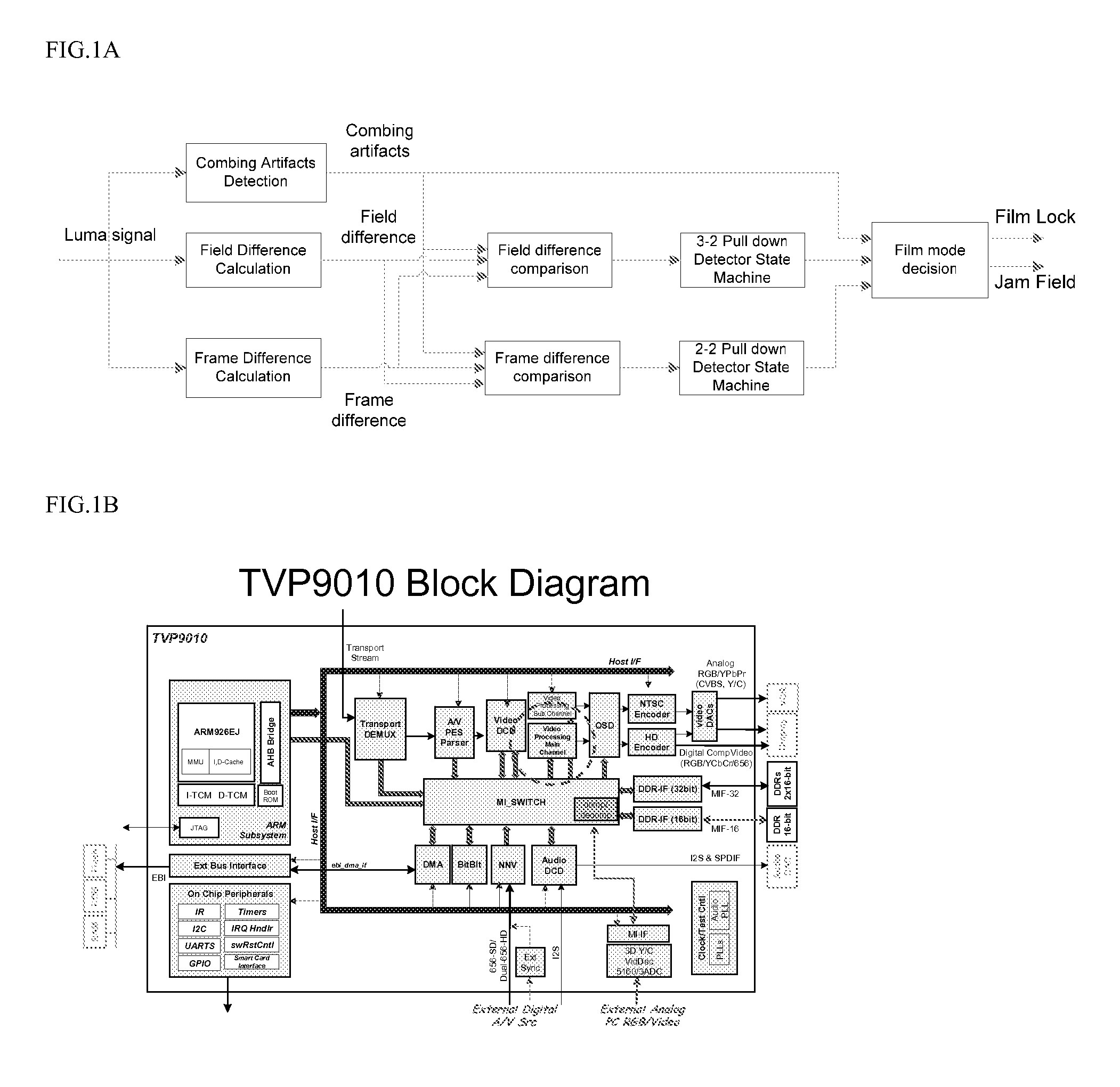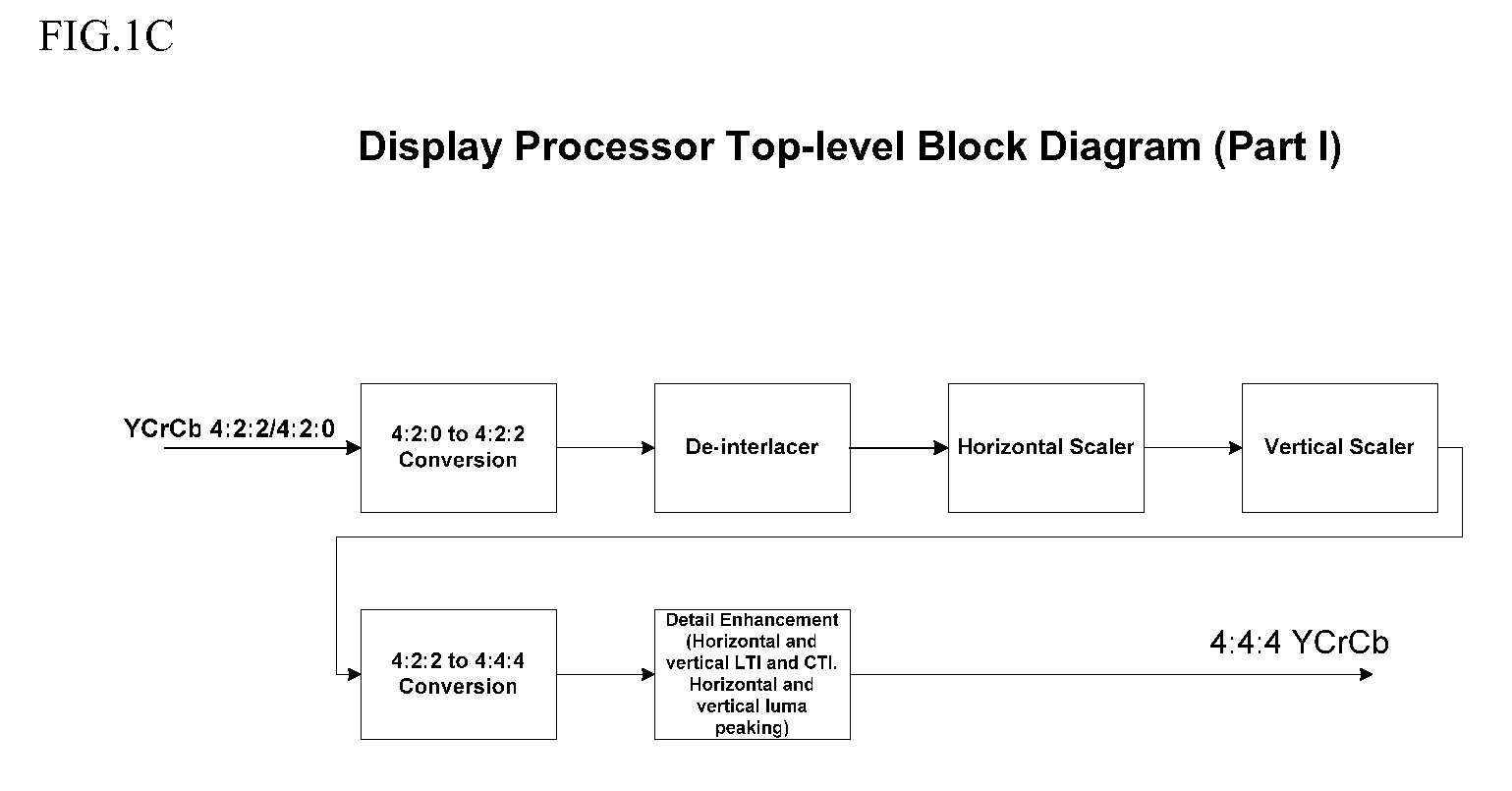Bad video edit detection
a technology of editing detection and bad video, applied in the field of digital video signal processing, can solve problems such as poor conversion performance, twitter effect, and not a straightforward linear upsampling problem
- Summary
- Abstract
- Description
- Claims
- Application Information
AI Technical Summary
Problems solved by technology
Method used
Image
Examples
Embodiment Construction
1. Overview
[0038]Preferred embodiment methods perform film mode detection with pull down detection which incorporates combing artifact measures. Further preferred embodiments provide bad edit and mixed content detection when only a two-field memory is available by accumulation of partial field combing artifact measures. FIGS. 1, 3, and 6 illustrate preferred embodiment film mode detectors implementing preferred embodiment methods.
[0039]Preferred embodiment systems perform preferred embodiment methods with any of several types of hardware: digital signal processors (DSPs), general purpose programmable processors, application specific circuits, or systems on a chip (SoC) such as combinations of a DSP and a RISC processor together with various specialized programmable accelerators. FIG. 1B illustrates functional blocks of a processor with FIGS. 1C showing details of the display processing, including de-interleaving. A stored program in an onboard or external (flash EEP)ROM or FRAM coul...
PUM
 Login to View More
Login to View More Abstract
Description
Claims
Application Information
 Login to View More
Login to View More - R&D
- Intellectual Property
- Life Sciences
- Materials
- Tech Scout
- Unparalleled Data Quality
- Higher Quality Content
- 60% Fewer Hallucinations
Browse by: Latest US Patents, China's latest patents, Technical Efficacy Thesaurus, Application Domain, Technology Topic, Popular Technical Reports.
© 2025 PatSnap. All rights reserved.Legal|Privacy policy|Modern Slavery Act Transparency Statement|Sitemap|About US| Contact US: help@patsnap.com



